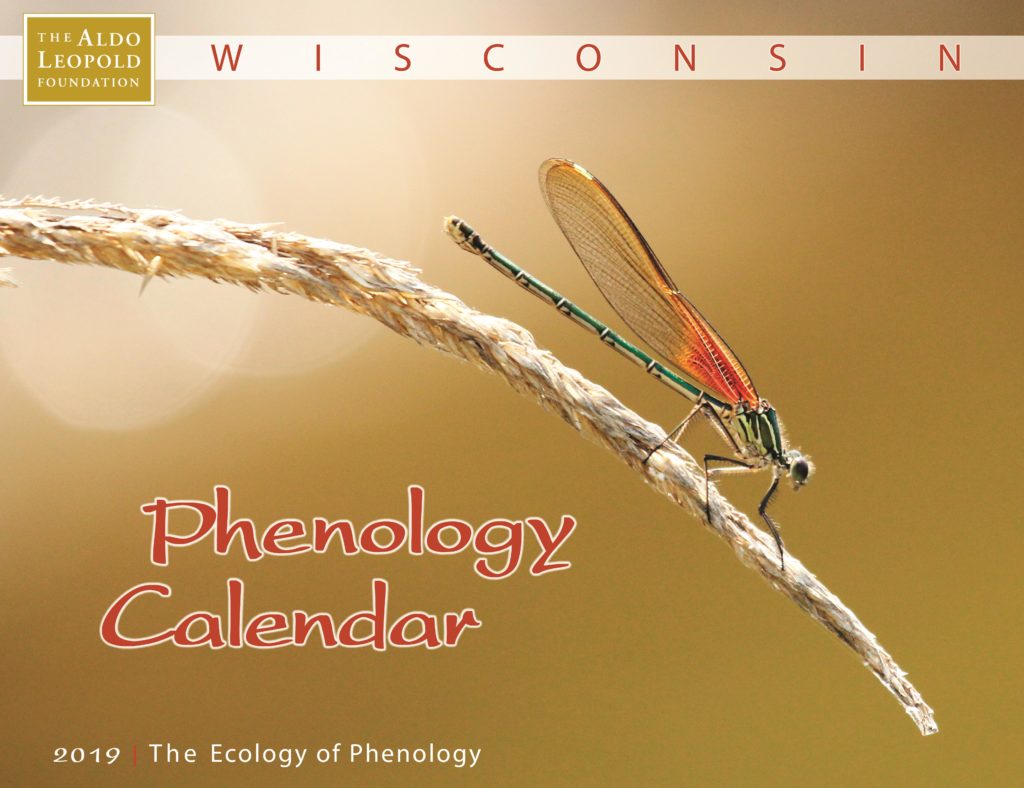
The Ecology of Phenology
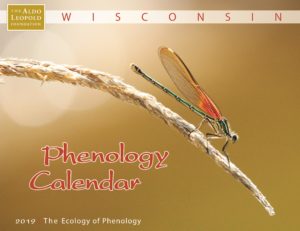
The 2019 Wildlife Phenology CalendarThe Aldo Leopold Foundation is pleased to share the Leopold family’s legacy of keeping phenology records through the publication of the 2019 Wisconsin Wildlife Phenology Calendar: The Ecology of Phenology. Each page provides an insight into an ecological explanation of a phenological event, alongside beautiful wildlife photography. The detailed phenological data for each month will help you anticipate when various seasonal events will occur, and the ecological background provided will help you understand why.
Phenology is the study of the timing of seasonal events in nature. For Aldo Leopold, keeping phenological records was a way to maintain an intimate connection with nature and gain a sense of place. To the curious naturalist, these phenological records are also indicators that help us understand the inner workings of the land. This year’s calendar brings to life these inner workings by highlighting the ecology behind phenology.
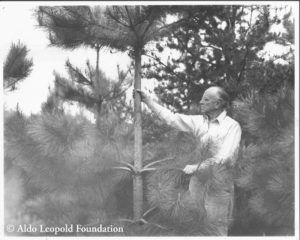
Ever wonder how plants and animals can time with considerable accuracy when different seasonal events will take place each year? The general answer is that for each plant or animal the critical annual event—be it blooming, migrating, hibernating, or some other key life cycle event—occurs when it has the best chance leading to success at each of life’s three major goals: growing, surviving and reproducing. In each instance there is something happening in the organism’s environment that ultimately determines their success or failure at life’s goals. We call those environmental conditions the ultimate factors that determine when a seasonal event should ideally and on average occur each year. Common ultimate factors include food availability, temperature and rainfall. Natural selection strongly favors organisms that engage in critical seasonal activities at the optimal time.
But, reacting appropriately to seasonal changes in ultimate factors requires a mechanism for telling seasonal time in order to anticipate and prepare for the arrival of an ultimate factor. Unlike us, plants and animals don’t have access to printed calendars to help them know ahead of time that it’s time to begin preparing for a key life cycle event. Instead, they rely on other environmental clues that give them a sense of seasonal time. These environmental clues of an upcoming change in an ultimate factor are called proximate factors. They don’t directly affect growth, survival and reproduction per se, but they give a plant or animal an essential sense of seasonal time and allow them to be in sync with ultimate factors.
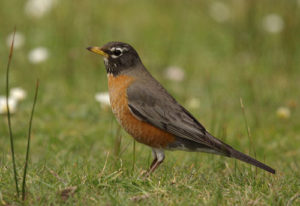
So, for example, many birds migrate to their breeding grounds and initiate nesting activities at the precise times that eventually allow their young to have access to a future peak in seasonal food availability. Thus, parents insure that their offspring can grow rapidly and that their own reproductive effort will be successful. In this case, food availability is the ultimate factor. But, how does a migratory bird that might have spent the winter hundreds or thousands of miles from the breeding ground, “know” when to begin migration, courtship, territory establishment, nest building and egg laying long before the seasonal flush of food? They use photoperiod, or day length, as a proximate factor. As the photoperiod changes birds respond through physiological processes that stimulate seasonal activities at just the right time. Photoperiod is a great proximate factor to use as a clue because it doesn’t vary between years and because many plants and animals have physiological mechanisms for monitoring and responding to it.
As we will highlight throughout this year’s calendar, many different environmental factors determine when a particular phenological event occurs. Some are proximate factors while others are ultimate factors. Ecology is the study of how organisms interact with one another and with their environment. So, phenology, the study of the timing of seasonal events, reveals one important way that plants and animals relate to their surroundings to ensure that they succeed at achieving their basic life goals.
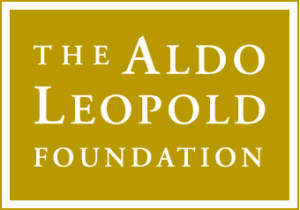 Calendars are all sold out this year.
Calendars are all sold out this year.
Read more about Phenology: Keeping track: Frequently Asked Questions about Phenology.
Written by Dr. Stan Temple, Beers-Bascom Professor Emeritus in Conservation, UW-Madison, and Senior Fellow, The Aldo Leopold Foundation
